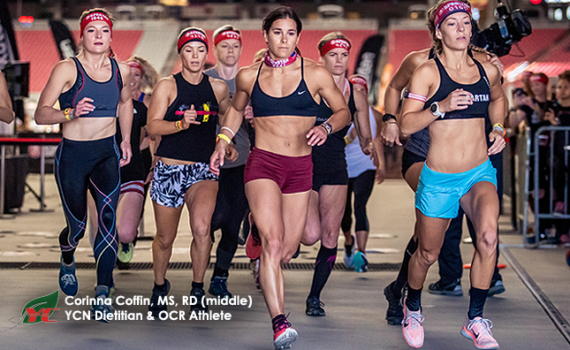
Tracking Your Intake
Category:fuel,macronutrients,Micronutrients,nutrition trackingThe following questions are ones we (as dietitians) often are asked when it comes to tracking intake. We want to emphasize that while tracking can be a very useful tool, it is not the only method for improving nutrition habits and can be more damaging than helpful to some, depending on personal food-related behaviors and tendencies. If you are unsure whether or not this would be an effective starting place for you to address your nutrition goals, please don’t hesitate to reach out to us at: corinnacoffin@yancycamp.com.
1. How can using a food journal be effective in monitoring your intake?
Nutritional awareness is often the first step in dialing in your nutrition. If we don’t know what our typical eating patterns and food choices look like, we can’t expect to take steps toward improving them. Monitoring intake by keeping a food journal or using an online tracker can be extremely helpful, not only for creating a sense of awareness, but also for learning more about our food and their nutritional components. Food trackers are a great way to learn which foods are high in protein, versus fat, versus carbohydrates, as well as their calorie, sugar, fiber, vitamin and mineral content. Tracking intake can also help maintain nutritional consistency from day to day and avoid sporadic eating patterns.
2. In general, can you explain a good rule of thumb to track macros for beginners? How can they simply be aware that they are eating enough/proper ratios of carbs/proteins/fats if they want to keep an eye on their nutrition?
The United States Department of Agriculture’s (USDA) MyPlate guidelines offer a really great visual aid in creating a healthy plate at each meal. This includes 1/4 of your plate lean protein, 1/4 whole grains, and 1/2 fruits and veggies. Your hands can also be great tools for measuring and portion control. Use the size of your palm as a serving of protein, your fist for veggies, the size of your entire thumb for fats, and a cupped handful for carbs. Start with at least one serving of each at meals. Depending on your size, activity level, health and performance goals, you may need to adjust the number of servings at each meal. Working with a registered dietitian can be helpful for determining serving sizes and overall caloric needs.
3. Why is it important to track your nutrition, even (or especially!) as a beginner? How can it help you improve your workouts and performance?
Sometimes our intake is WAY off from where we think it is, so tracking your nutrition can be a particularly useful tool to ensure you are consuming an appropriate amount of food to meet your daily needs. Most often, we tend to associate tracking food intake with weight loss, but it can also be a way to ensure that an individual is eating enough food to support his/her needs. Monitoring food intake during periods of training and/or competition when physical demands on the body are increased can be extremely effective for improving performance outcomes when following proper nutrition protocol.
4. How can using a nutrition app be really effective?
Most nutrition apps get easier the more you use it. Once you’ve tracked for a few days and all of your most common foods have been logged once, you no longer have to go through the search of finding the exact item you’re looking for. MyFitnessPal, for example, has a huge food database, is free, and has the option for friend requests and diary sharing, which can be helpful between coach and clients for direct feedback. While calorie/macro tracking isn’t for everyone, it can be a great way to monitor progress over time and implement changes to better support your health and fitness goals.
5. How can tracking intake and getting on a schedule actually improve your nutritional awareness and food intake over time?
I always recommend that clients create and adhere to a consistent meal schedule in order to take the guesswork out of one’s day when it comes to food intake. If you have specific calorie and/or macronutrient targets, knowing the amount of meals and snacks you plan to consume over the course of the day will give you a better sense of how to spread out those nutrients in a manner that supports your lifestyle. Of course, life throws us many curveballs, so you might have to adjust this schedule on the fly, but going in with a game plan will serve you better than making it up as you go.
6. In what instances can nutrition tracking be harmful or act as a disservice to an individual?
Although there are certainly many benefits to tracking, sometimes having such specific information about our food can trigger obsessive behaviors that do more harm than good. This mostly refers to tracking on a nutrition app where calories and other numerical data is offered regarding one’s intake. Even in the absence of a true eating disorder (ED), individuals can still experience “disordered eating” behaviors such as anxiety around food, frequent dieting, food restriction, skipping meals, binging and purging. If this type of tracking puts you in a bad head space, there are other ways to ensure adequate food intake such as recording in a notebook, following the MyPlate guidelines and using the hand-eye method among others. Talk to a dietitian to find the right method for you and your unique needs.

